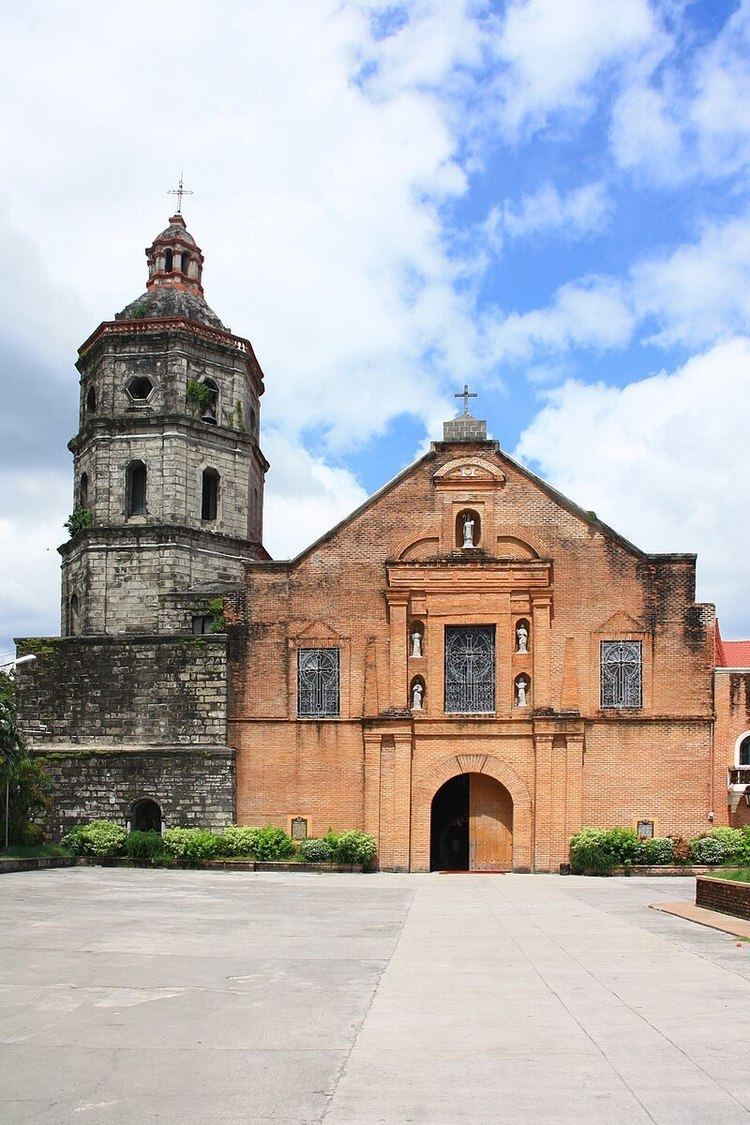Designated August 2013 Height 10 m Length 82 m | Denomination Roman Catholic Architectural type Church Opened 1638 | |
 | ||
Heritage designation Important Cultural Property Address Lubao, Pampanga, Philippines Materials Sand, Gravel, Cement, Mortar, Brick Similar Betis Church, San Guillermo Parish Ch, Immaculate Conception Church, Metropolitan Cathedral of San Fe, Santa Monica Parish Ch | ||
The San Agustin parish church, also known as the Lubao church, is a 17th-century Neo-classic, Spanish stone and brick church located at Brgy. San Nicolas I, Lubao, Pampanga, Philippines. In 1952, a historical marker bearing a brief history of the structure was installed on the facade of the church by the Historical Committee of the Philippines, precursor of the National Historical Commission of the Philippines. In 2013, the church has been declared by the National Museum of the Philippines as an Important Cultural Property.
Contents
History
Lubao has been annexed to Tondo as a visita on May 3, 1572. Soon after, on March 5, 1575, Father Provincial Alfonso Alvarado was assigned to lead the convent of Lubao. The volume of baptisms signed on the baptismal book of Lubao attest to the importance of Lubao as a missionary center.The history of the current edifice has several version. One source tells of one Fr. Juan Gallegos, assigned as the first resident priest of Lubao, that organized the early settlement and made the church structures of light materials in a place called Sitio Sapang Pare, a landing place for missionaries coming in from Manila Bay and the tributaries of the Pampanga river. Eventually, the settlement was transferred to its present-site. Other sources dispute that it was Father Francisco Coronel who founded and established the town in its present-site and started building the current edifice. However, other references refute this claim stating that Father Coronel had only stayed in Lubao in 1613 and had never came back. Father Jeronimo de Venasque continued the construction in 1635 and was complete by Father Francisco Figueroa in 1638. Father Antonio Bravo made some repair works in 1877 and in 1893, Father Antonio Moradillo commissioned Italian artists Dibella and Alberoni to paint the ceiling nave and other ornamentations. The cemetery chapel and stone gate can also be attributed to Father Moradilla. The church and convent were occupied by the Philippine revolutionaries in 1898, damaged in 1945 during World War II by the Japanese bombing and in 1962 during a strong typhoon. The church was restored in 1954.
Architecture
The church measures 82.45 meters long, 21.12 meters wide and 10.50 meters high with stone and brick walls 2.46 meters thick. The five story, bell tower attached to the left of the facade is 31 meters high. The flat surface of facade is bare of ornamentation save for the central retablo of niches, fluted pilasters and Ionic columns in Neo-Classical style. The facade has one semicircle arched main door and three rectangular windows on the second level. The facade is crowned by an imaginary triangular pediment topped by a cross. As of writing, the rough brick surface of the facade has been replaced by new ones.
Inscriptions on the Church Structure
To recognize the cultural significance of the San Agustin church, three significant inscriptions have been placed on the church: one from the National Historical Committee, (now the National Historical Commission of the Philippines), the parish of Lubao, and the National Museum of the Philippines:
2013 National Museum of the Philippines Marker for Important Cultural Property
In accordance with the requirements of the National Museum in declaring Important Cultural Properties, the San Agustin church has been declared as such because of its significant architectural features and altarpiece. According to the National Museum, the Important Cultural Property title is the second highest title granted by the institution to heritage structures (next to the National Cultural Treasure). Accordingly, the San Agustin church did not pass requirements to be declared a National Cultural Treasure because what remains of the original structure is less that 60 percent.
